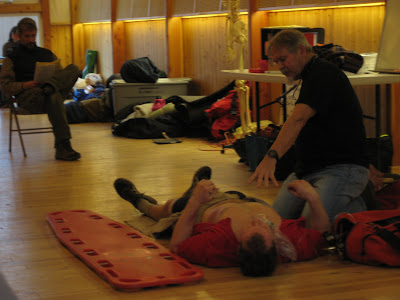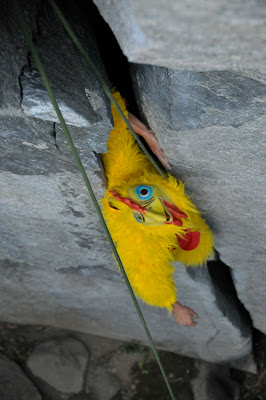Zoom in to check out the stitching on the toe strap
This is not exactly a new design; this type of sandal is probably best known as the choice footwear for the Tarahumara people. I am not planning on running 200 miles in these sandals, but they are comfortable, stay on my feet more securely than other sandals I have worn, and will probably outlast any shoe due to the durability of the tire rubber.
Anyone who has every tried to cut up a tire can tell you that without heavy-duty equipment it is nearly impossible. The combination of vulcanized rubber and steel wire is what makes tires so damn durable. However, the steel belts do not go throughout the en(tire). The sidewalls of the particular tire I chose to use were only reinforced with nylon thread, easily cut with a utility knife. There is also a steel reinforced inner rim, which is what provides the stiffness that prevents the tires from popping off your car rims (that would be bad).
Welcome to my workshop
I learned to tie this type of sandal from this site. Why re-explain something when someone has done a good job of it already? I went with the easy on/off, slip-on style.
After cutting out the soles to the shape of my foot, I laced it. Since I used 1/2" tubular webbing ($.33/ft) I had to cut some large-ish slits in the sole. I have used 3mm cord in the past; it took a lot of getting used to and was never totally comfortable. This webbing was much better.
Instead of tying a knot for the toe strap like is done on the instructional page, I cut a recessed slot so I could thread a loop of the webbing, then sewed it with a device I have modified: a Speedy Stitcher. The standard model comes equipped with thick, waxed thread and a needle to match. I thought this was pretty lame so I traded out the needle for a sewing machine needle with a round shank and added polyester sail thread. The result is a sleek tool that makes it very easy to sew fast, VERY strong stitches.
It is important to note that I only did one line of stitching down the middle. I tried doing two parallel lines at first, but this made the webbing between my toes too stiff, forcing them apart. Not comfortable. I also reinforced the toe strap under the sole with some adhesive. Despite it being recessed so it contacts the ground much less, I figured a little bit of extra abrasion resistance would not go amiss.
Ta da!
If you have any questions or suggestions, post to the comments.

































